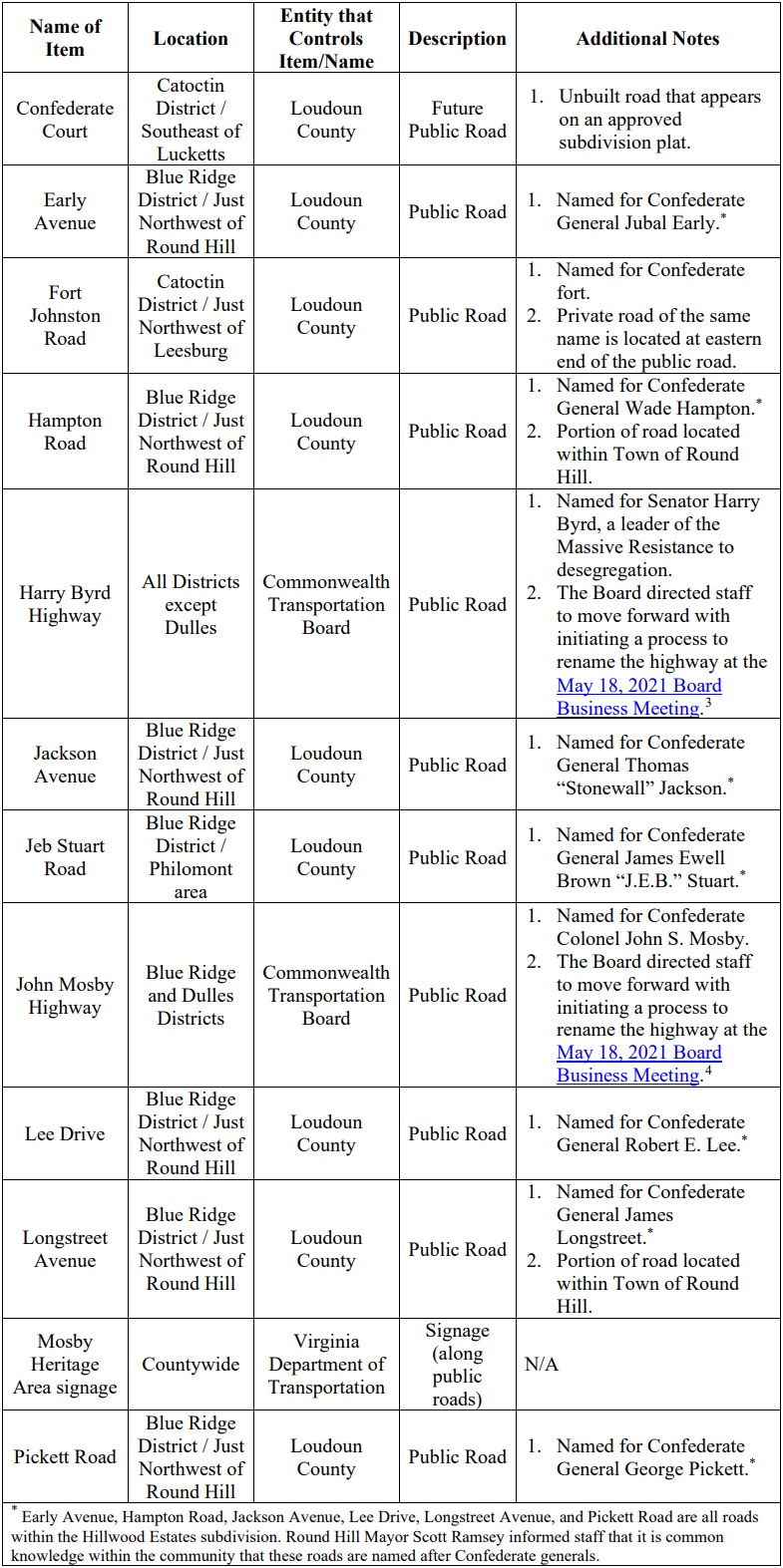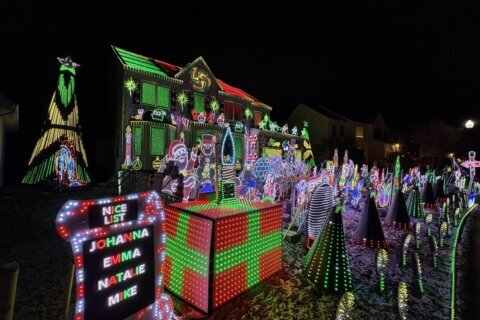The Loudoun County Board of Supervisors will consider what to do about roads, streets and public facilities named for prominent leaders in the Confederacy and segregationist era. The roads range from one of the region’s busiest commuter routes to a still-unbuilt road slated for a subdivision near the town of Lucketts.
On Tuesday, the board will consider next steps for the roads included in an inventory of Confederate and segregationist symbols that have been compiled in the past year. The roads are owned by the county and the Virginia Department of Transportation.
In December 2020, the panel voted to rename the portions of U.S. Routes 50 and 7 that run through the Virginia county.
Route 50, also called John Mosby Highway, is named for a Confederate commander during the Civil War. Route 7, known as Harry Byrd Highway, is named for the Virginia governor and U.S. senator who was an ardent segregationist.
Board of Supervisors Chair Phyllis Randall supported the proposals to rename the two highways and to inventory public roads, buildings, parks and other facilities named for racist figures.
“We should learn history. We should know it. We should study it, and we should appreciate it. But every part of history should not be celebrated,” Randall said in December.
The inventory of Confederate and segregationist symbols compiled by staff includes Early Avenue, near Round Hill, named for Confederate Gen. Jubal Early.
Hampton Road, Jackson Avenue, Jeb Stuart Road, Lee Drive, Longstreet Avenue and Pickett Road are also named for Confederate generals.
Fort Johnston Road, northwest of Leesburg, was named for a fort built in the winter of 1861 to defend the town from the threat of possible invasion by the Union Army.
The inventory, included in a staff report, includes Confederate Court, an unbuilt road that appears on an approved subdivision plat near the town of Lucketts.
Although the staff was tasked with compiling the list based on Confederate and segregationist symbols, the report also includes information about Kephart Bridge Landing, a canoe and kayak launch facility at Elizabeth Mills Riverfront Park.
According to the agenda item, the landing was named for George Kephart, a wealthy slave trader who lived in the Belmont section of the county and was buried in Leesburg. Kephart owned a slave ship and the Duke Street slave pens, located in Alexandria.
During Tuesday’s meeting, the board is expected to consider further research, or whether it should take next steps toward renaming entities in the inventory, listed below:









